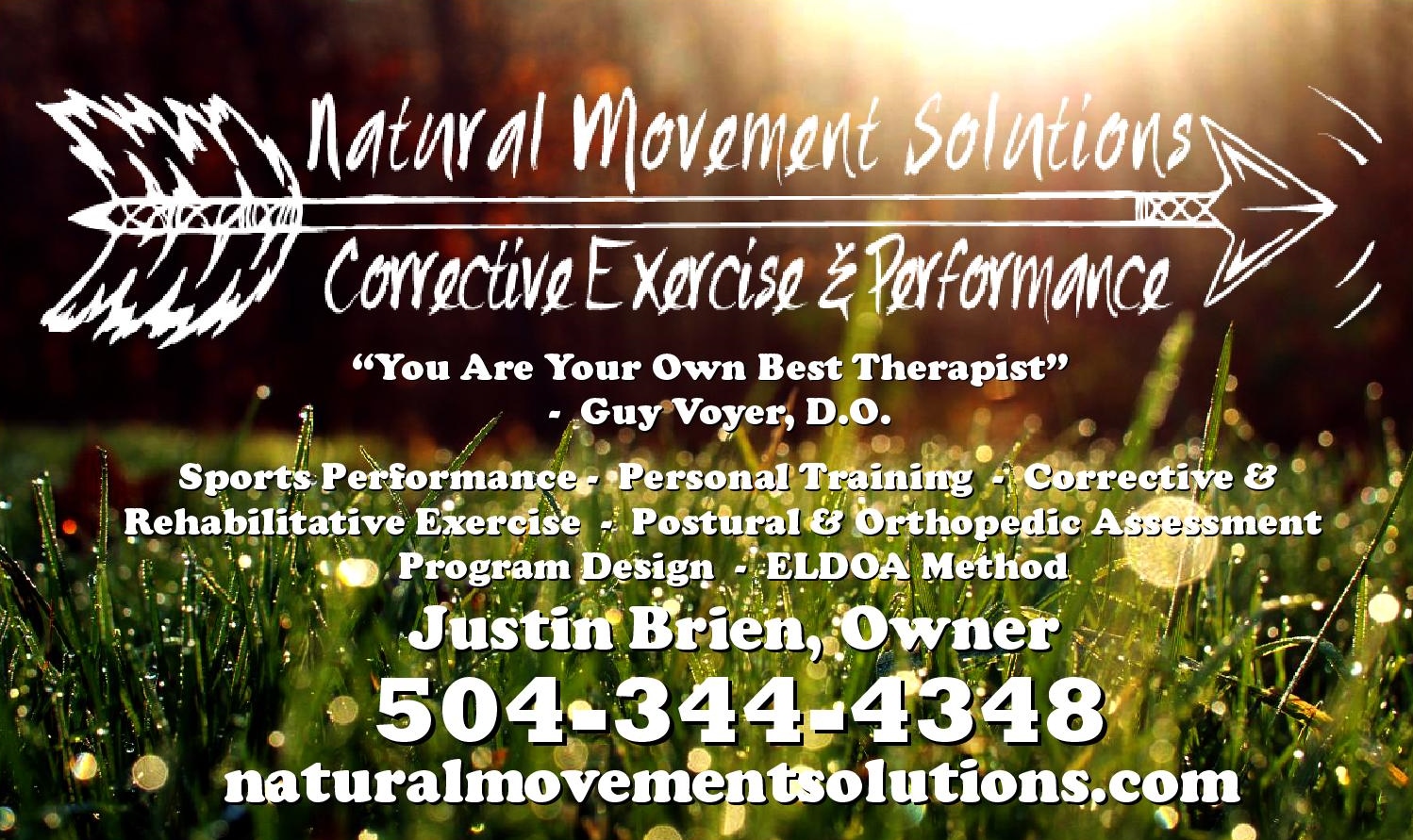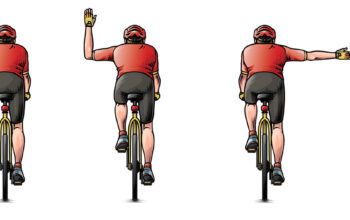by Justin Brien, Natural Movement Solutions
Analytical/Segmental Training- analytical/segmental training is very precise exercise and very necessary for everyone. Pilates would be considered a form of analytical training. Rehabilitation is analytical, as is bodybuilding. When you want or need to train analytically, you need to work on a specific muscle or a specific part of a muscle. Who out there is functioning perfectly? No one. In my experience working with clients, I always have to use very specific strengthening exercises to restore function and balance to each individual. For example, you can segmentally work the glutes (butt muscles) for someone who has poor activation or poorly developed glutes. Analytical and segmental exercises help to improve your function because your brain and nerves work to contract and work the muscle very precisely. You can even go one step further and train a muscle segmentally but work a specific part of that muscle and train it in a specific range. This way of exercising can be put to good use for someone with a hip or knee problem. Segmental training helps to wake up dormant and atrophied muscles that are needed to support the structure. This type of training is probably 75% of my overall program because it is what makes my body feel and function the best! Keep in mind that this is what works for MY body. I have suffered a few injuries throughout my life that have caused some structural imbalances that I continually have to manage.
Global Exercise- global training is what many refer to as functional training. The movements are much bigger and replicate what we do in our daily lives, walking, running, squatting down, lifting things, going up and down stairs, getting ourselves up and down off of the floor etc… The squat, lunge, deadlift, push up, pull up, crawling, climbing etc., are all global movements that require multiple joints and many muscle actions to create the movement. I also mentioned Yoga being a global type of exercise. The way you transition through the poses and hold the poses using multiple joint structures and entire regions of the body is considered global. Athletic training is also global. Olympic lifting, speed and agility work are all total body movements. For myself, I usually do at least one day of global training each week or choose one global exercise to do in a segmental workout. It’s my favorite way to exercise, so I always manage to get a few global movements in each week. I follow up with 1-2 myofascial stretches and 1-2 ELDOA postures to normalize the tissue at the end of the training session.
Metabolic Training- metabolic training is usually done for time, but not always. Metabolic conditioning is the most demanding on the joints and the nervous system. This is when you push the body to the extreme, with a challenge to the cardio-respiratory system, the musculoskeletal system and the nervous system to the maximum. This is usually done with bigger, faster, global movements in a circuit fashion with very little or no rest in between. Metabolic training takes a huge toll on my body so I usually wait until I have enough time to do a lot of regenerative exercise after the workout and the following day. My recovery program is a blend of 2-3 of the following… Myofascial Stretching (MFS), ELDOA and Global Postural Stretching (GPS) done immediately after the workout. It makes sense to normalize the tension that you’ve just created in your body. Who wants more disorganized tension in their body? My conclusion for metabolic training is that you need to have a goal. What is the need? Men and women of the military and law enforcement have to meet a big physical demand when it comes to their job. Playing sports also requires this type of conditioning. For wellness, it makes sense to be wise about training and recovery as well.

There is a time and a place for all types of training but when you think about longevity and joint joint function there are a few things to consider… To do all analytical training and not integrate the muscles into full body movements doesn’t make sense! The reverse is also true, to do nothing but global movements when the body is out of balance and half of the muscles that you are supposed to be using are shut off and not functioning properly, doesn’t make any sense! Furthermore, to only do high performance/metabolic training everyday, with no program to maintain mobility and space for the joints, only puts an expiration date on your metabolic training. Any healthy exercise program considers proper periodization. If you train hard 365 days a year with no respect to periodization and planning, the structure will always pay at it’s weakest link. One of the biggest obstacles for me is to convince people of what their body needs vs. what their brain wants. If we can allow ourselves to get outside of our comfort zones and explore other methods and modalities of exercise, it can break the monotony and the damaging cycle that I find many clients stuck in. As a matter of fact, the most functional people that I’ve evaluated over the past few years have experienced and practiced a variety of different exercise methods including, Pilates, Yoga, weight lifting, etc. If you are aware that something is not right in your body then listen to your body, it’s speaking to you! It’s not wise to continue to train into the dysfunction. Try something new, stick to it, then take what you can from it and move on. Our bodies are very complex and require a lifetime of exploration.
Justin Brien, Natural Movement Solutions
504-344-4348
naturalmovementsolutions.com




